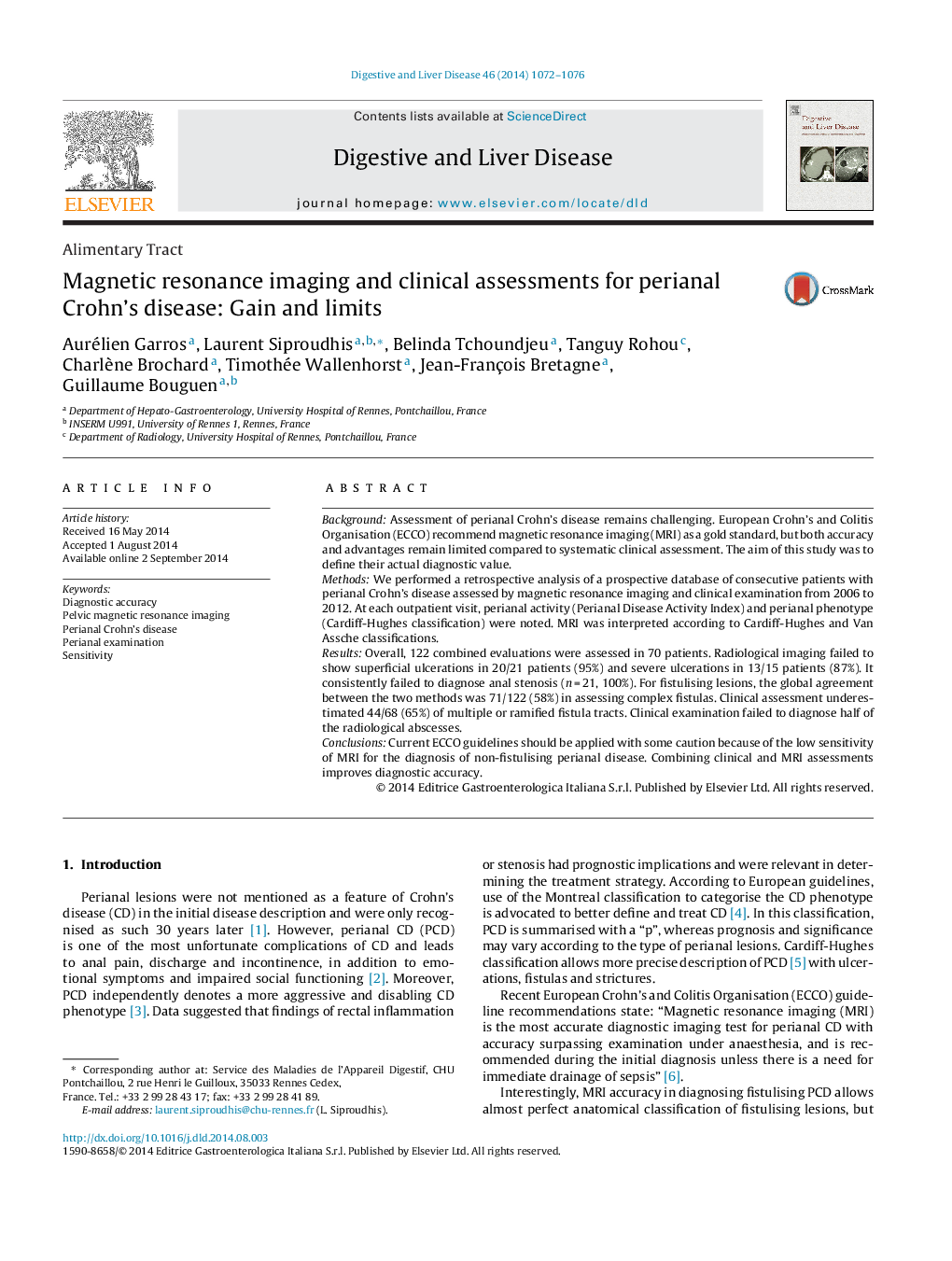| Article ID | Journal | Published Year | Pages | File Type |
|---|---|---|---|---|
| 6088605 | Digestive and Liver Disease | 2014 | 5 Pages |
BackgroundAssessment of perianal Crohn's disease remains challenging. European Crohn's and Colitis Organisation (ECCO) recommend magnetic resonance imaging (MRI) as a gold standard, but both accuracy and advantages remain limited compared to systematic clinical assessment. The aim of this study was to define their actual diagnostic value.MethodsWe performed a retrospective analysis of a prospective database of consecutive patients with perianal Crohn's disease assessed by magnetic resonance imaging and clinical examination from 2006 to 2012. At each outpatient visit, perianal activity (Perianal Disease Activity Index) and perianal phenotype (Cardiff-Hughes classification) were noted. MRI was interpreted according to Cardiff-Hughes and Van Assche classifications.ResultsOverall, 122 combined evaluations were assessed in 70 patients. Radiological imaging failed to show superficial ulcerations in 20/21 patients (95%) and severe ulcerations in 13/15 patients (87%). It consistently failed to diagnose anal stenosis (n = 21, 100%). For fistulising lesions, the global agreement between the two methods was 71/122 (58%) in assessing complex fistulas. Clinical assessment underestimated 44/68 (65%) of multiple or ramified fistula tracts. Clinical examination failed to diagnose half of the radiological abscesses.ConclusionsCurrent ECCO guidelines should be applied with some caution because of the low sensitivity of MRI for the diagnosis of non-fistulising perianal disease. Combining clinical and MRI assessments improves diagnostic accuracy.
